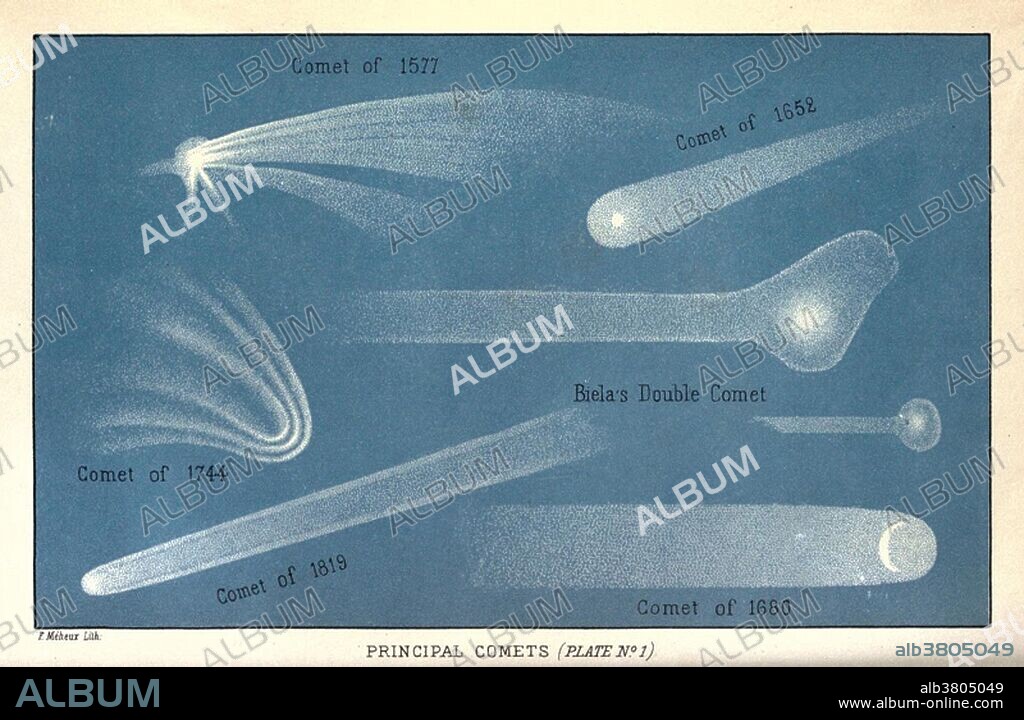alb3805049
Principal Comets, Plate 1, 19th Century

|
Zu einem anderen Lightbox hinzufügen |
|
Zu einem anderen Lightbox hinzufügen |



Haben Sie bereits ein Konto? Anmelden
Sie haben kein Konto? Registrieren
Dieses Bild kaufen

Titel:
Principal Comets, Plate 1, 19th Century
Untertitel:
Siehe automatische Übersetzung
The Great Comet of 1577 (C/1577 V1) was a comet that passed close to Earth during the year 1577. Comet of 1652 (1652 C/1652 Y1) was a naked-eye comet observed, amongst others by Jan van Riebeeck. The Great Comet of 1680 (C/1680 V1) has the distinction of being the first comet discovered by telescope. Reputedly visible even in daytime and was noted for its spectacularly long tail. Erik Prosperin was an 18th century Swedish astronomer. He was a famous calculator of orbits: comets, planets, and their satellites, including Comet Montaigne (C/1774 P1). Comet of 1819 (289P/Blanpain, formerly D/1819 W1 Blanpain) is a short-period comet. Biela's Comet or Comet Biela (3D/Biela) was a periodic Jupiter-family comet. It was observed to split in two and has not been seen since 1852. As a result it is currently considered to have been destroyed, although remnants appeared to have survived for some time as a meteor shower, the Andromedids. Image from Astronomy (1875) by J. Rambosson.
Bildnachweis:
Album / Science Source
Freigaben (Releases):
Model: Nein - Eigentum: Nein
Rechtefragen?
Rechtefragen?
Bildgröße:
4500 x 2931 px | 37.7 MB
Druckgröße:
38.1 x 24.8 cm | 15.0 x 9.8 in (300 dpi)
Schlüsselwörter:
 Pinterest
Pinterest Twitter
Twitter Facebook
Facebook Link kopieren
Link kopieren Email
Email
